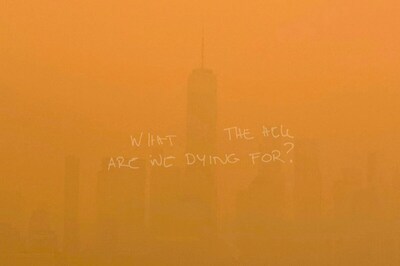
views
The day the Supreme Court-appointed Environment Pollution (Prevention and Control) Authority sought the apex court’s intervention to save the national capital from choking, the city’s transport minister, Kailash Gehlot, said that the cabinet note for free bus rides for women would be ready soon.
The aforementioned fact clearly indicates that the transport policy of the Delhi government was not directed towards strengthening the existing system; it was instead draining it for electoral gains. The EPCA in its report to the apex court mentioned that “the Delhi government has not added new buses into its fleet for the past four years. Delhi has 17 buses per lakh people compared to 107 buses per lakh people in Beijing. But what is also alarming is that these buses are ageing — all of DTC’s current 3,600 on-road buses are over eight-years-old and it will be necessary to phase them out in the next few years.”
Despite having failed to add even a single bus to the city’s dilapidated fleet, Chief Minister Arvind Kejriwal has gone on to announce that the free rides would not be limited for women but would be extended to senior citizens and students too. The question now is that for a free ride there also has to be a bus, but given the state of affairs, the public transport system in the national capital for now is moving towards a collapse.
The EPCA has sought the court’s intervention to expedite the approval process and schedule for induction of new buses in the city. According to the official estimates, the Delhi Transport Corporation would require an annual subsidy amount of about Rs 200 crore to run the free ridership scheme and an additional cost of Rs 100 crore would be incurred on the Delhi Integrated Multi-modal Transit System Ltd-operated cluster (orange-coloured) buses.
The government was ironically readying schemes for such subsidies even as it had failed to procure buses. According to EPCA’s report, Delhi at present has a total of 5,459 buses against the required 10,000, as per a 1998 Supreme Court order. The non-seriousness of the government towards the whole issue can also be gauged from the fact that the report has said that there has been no study in Delhi so far which establishes the current ridership of the different modes of travel.
Raising red flags also in the case of delay in starting the construction of phase-IV of the Delhi Metro, the panel has sought the court’s intervention. With the Delhi government refusing to fund its share of the cost of construction, the matter has been stuck. While the Kejriwal government has promised free rides in the Metro for the sake of electoral gains, it has put its foot down on parting with its share of the cost.
The proposal for phase-IV of the Delhi Metro was first made in 2014 and the work was scheduled to begin by 2016. However, the Kejriwal government has been at loggerheads with the Narendra Modi government and the project is gathering dust waiting for approval. The DMRC, on the other hand, has written to both the Delhi government and the Centre that since it was finishing work on phase-III, it had workforce and machinery available at hand and the work on phase-IV could be immediately started, saving on overrun costs. There doesn’t seem to be anybody listening.
What the environment panel points out is that the city, which is already faced with acute levels of pollution, would turn into a virtual gas chamber if the public transport system was not strengthened. As of today, it’s estimated that the transport sector contributed approximate 28% of the city’s pollution during the winter months. The Union Earth Science Ministry’s pollution forecasting agency Safar has said in its reports that vehicles were the source of 40% of PM2.5 content in the city.
The solution lies in the city having a robust public transport system and not knee-jerk acts like hiking the parking fee or introducing controversial scheme like odd-even vehicle plying system. In January 2016, when it was introduced with much fiesta, reports showed that it did not yield much results in reducing pollution. The hike in parking fee, too, has not deterred people from buying private vehicles as it has become a necessity in the face of a failing public transport system. The construction and expansion of the Delhi Metro remains the only long-term solution to the problem of vehicular pollution.
Thanks to the Metro, today many off-campus colleges of Delhi University have emerged prominently on the higher education map of the city. Children from the capital suburbs also have easy access to various colleges, thanks to the Metro network.
Having talked of the brighter side, it should also be mentioned that Metro services are overstretched and the wear and tear can be seen in the general make-up of the facility and the breakdowns, when none happened till some years ago.
The transport policy of Delhi should not become a tool for the aggrandisement of the political agenda of various political parties. Delhi needs to fight pollution, but it would be best fought by creating such facilities for the residents that they give up polluting options on their own volition. And this can only happen by creating state-of-art facilities and infrastructure and not by giving free ridership for political gains.
Given the track record of the political parties, the Supreme Court, like in 1998, should once again come out with an exhaustive order to save the city from choking and its transport system from coming to a grinding halt.
(The writer is a senior journalist and political analyst. Views are personal)




















Comments
0 comment